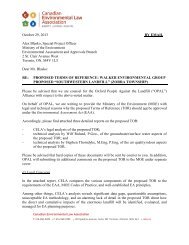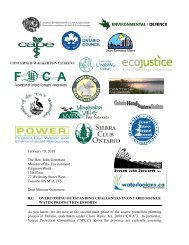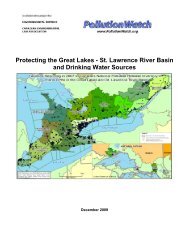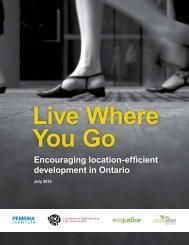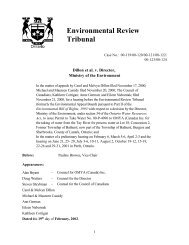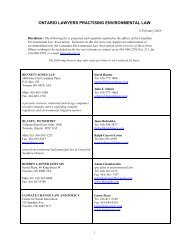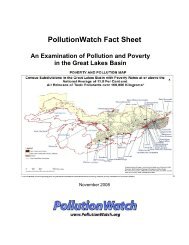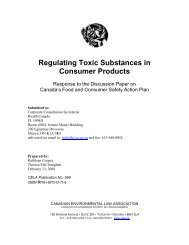H2Ontario - Version 2.0 - POLIS Water Sustainability Project
H2Ontario - Version 2.0 - POLIS Water Sustainability Project
H2Ontario - Version 2.0 - POLIS Water Sustainability Project
- No tags were found...
You also want an ePaper? Increase the reach of your titles
YUMPU automatically turns print PDFs into web optimized ePapers that Google loves.
Establish a Strong Foundation of Science & DataEcological Needs for <strong>Water</strong>It is critical that water budgets account for ecological water needs, not just human needs such asdrinking water supplies. Adequate flows in rivers and lakes xi are essential for healthy functioningecosystems, and the ecological services that these ecosystems provide. Assessing ecosystem needs forwater is necessarily complex; a precautionary approach should be adopted in the absence of certainty.Action 9: Initiate Studies on Ecological <strong>Water</strong> NeedsSupport development of watershed-based targets by working with Conservation Authorities to undertakecomprehensive studies of the ecological needs for water in their watersheds, by:• First completing studies on the ecological needs for water in “stressed” watersheds and ground wateraquifers.• Phasing in studies on the remaining watersheds and ground water aquifers.Priority 5: BenchmarksBenchmarks, a “standard by which something can be measured or judged”, are useful for comparingcurrent water use to best practices within sectors. For example, benchmarks for residential indoorwater use in Ontario have been stated as approximately 250 LCD prior to the 1996 Building Codechange, 200 LCD for new homes meeting the current code, 150 LCD assuming all fixtures are “highefficiency”, and as little as 120 LCD if “best in class” water efficiency measures are implemented. 29Similar numerical benchmarks for industrial, commercial and institutional water use are currently lessdefined or non-existent, largely because water is used in each of these sectors for widely varyingpurposes.Specific benchmarks for water use within a number of Priority Sectors could likely be developed, suchas the benchmarks identified for several types of food processing by RMIT University in Australia in its<strong>Water</strong> Saver Toolkit. 30Action 10: Identify Sectoral Benchmarks for <strong>Water</strong> Conservation & Efficiency<strong>Water</strong> Conservation Teams will identify sector specific water use benchmarks for Priority Sectors, includingexamining international examples of sector-specific benchmarks where applicable.xiRivers and lakes should not be construed to include man-made ditches that have not previously existed as naturalwatercourses.<strong>H2Ontario</strong>: A Blueprint for a Comprehensive - 22 -<strong>Water</strong> Conservation & Efficiency Strategy



